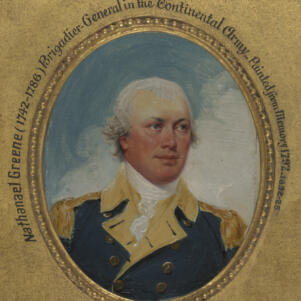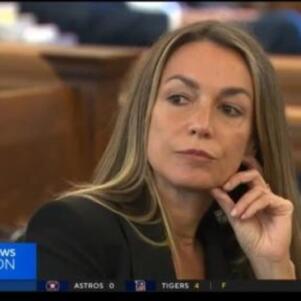Jack Kennedy Statue at Massachusetts State House On the Move
By State House News Service | October 24, 2020, 18:15 EDT
 This bronze statue of Jack Kennedy has stood on the grounds of the Massachusetts State House since 1990. Kennedy never served in the Massachusetts Legislature but both his grandfathers did, and he delivered a speech to the state Legislature on January 9, 1961 as president-elect. State House News Service photo by Sam Doran.
This bronze statue of Jack Kennedy has stood on the grounds of the Massachusetts State House since 1990. Kennedy never served in the Massachusetts Legislature but both his grandfathers did, and he delivered a speech to the state Legislature on January 9, 1961 as president-elect. State House News Service photo by Sam Doran. 
By Sam Doran
State House News Service
The bronze statue of President John Kennedy on a little-used corner of the Massachusetts State House lawn is taking a stroll back into the limelight.
Portrayed in mid-stride with one hand at his jacket pocket, Kennedy has stood since 1990 on the plaza in front of the State House’s West Wing entrance. But that entrance was closed after the 2001 terrorist attacks, and with the gate locked and trees branching out along the walkway, passing tourists who might hope to see some memento of Camelot have been moving along Beacon Street without being able to glimpse the 35th president.
The agency that administers state office buildings is now preparing to move the Kennedy statue closer to the street, to the lawn on the left of a disused entrance gate, according to a spokesman.
Former state representative James Brett, currently president and chief executive officer of The New England Council, served on the 1985-1990 special commission to build the memorial and on Tuesday applauded the decision to return it to public view.
Brett has heard from visitors who want to seek out the statue.
“And I’d have to tell them where it was but they wouldn’t be able to locate it, and if they did, it was so far in the back there that they really couldn’t get a picture or anything of it,” he said.
In recent years, a park ranger has sometimes been stationed nearby to offer limited viewing hours, but tourists must navigate the confusing network of corridors under the Golden Dome to locate the right door. Since the State House was closed to the public in March 2020, access has been totally cut off.
Moving Kennedy is part of a broader project on the plaza in front of the State House’s West Wing that involves a “waterproofing system” including new drainage systems, storm drain repairs, and manhole replacements, according to an Executive Office of Administration and Finance spokesman.
Work started in September and will also involve removal and reinstallation of soil and irrigation systems, pavers, balustrades, and granite steps.
A replica of the Liberty Bell will also get a new home.
The 2,080-pound bell is currently on the portico at the top of the front steps, where it is likewise inaccessible to the public. A new location hasn’t been finalized, but possibilities include Ashburton Park or the interior of the State House. The bell was originally displayed in Doric Hall.
As for the replica of John Kennedy, there is significance to seeing the president cast in bronze on the side of Beacon Street. News columnist Peter Lucas, who attended the statue’s original unveiling, told State House News Service this week that it’s appropriate for Kennedy to be depicted on a site just around the corner from the Bowdoin Street apartment where he established district residency before running for Congress in 1946.
Lucas penned several Boston Herald columns in the 1980s and ’90s about the quest for a Kennedy memorial. Ahead of the 1990 unveiling, he wrote that it took 27 years and “several commissions” to finally get one built.
The panel that commissioned the memorial used private funds in what Brett called a “grassroots campaign” and an “example of a project that didn’t cost anything of taxpayers’ money.” Brett recalled that Don Dowd of the Coca-Cola Bottling Company had the idea to engage children across Massachusetts in collecting pennies and nickels for the cause.
“It’s a beautiful statue. But it was always hidden. And I understand [the security concerns after 9/11] but in some respects it was sort of a waste because it’s a beauty, a nice addition, and attraction to the State House. So moving it makes an awful lot of sense and hopefully people on the Freedom Trail or going by the State House will be able to see that beautiful statue,” Brett said.
The bronze statuary collection on the State House grounds — including U.S. Senator Henry Cabot Lodge, U.S. Secretary of State Daniel Webster, and Quaker martyr Mary Dyer — is regularly washed and waxed by a conservator. During routine maintenance in September, the conservator treated Kennedy with an extra coat of wax to protect the bronze when it is moved, said State House art curator Susan Greendyke Lachevre.
Greendyke Lachevre said that sculptor Isabel McIlvain designed the eight-foot-tall figure to stand on a low pedestal that keeps Kennedy from looming too high over passersby, and means he will be placed closer to the sidewalk than the other bronze statues on the lawn.
“So when he is moved, when you look at him now from the street or the sidewalk, he will not be looming above in motion, he will be fairly close to the ground still,” Greendyke Lachevre said.
“… It will almost look like he’s walking on the lawn.”












